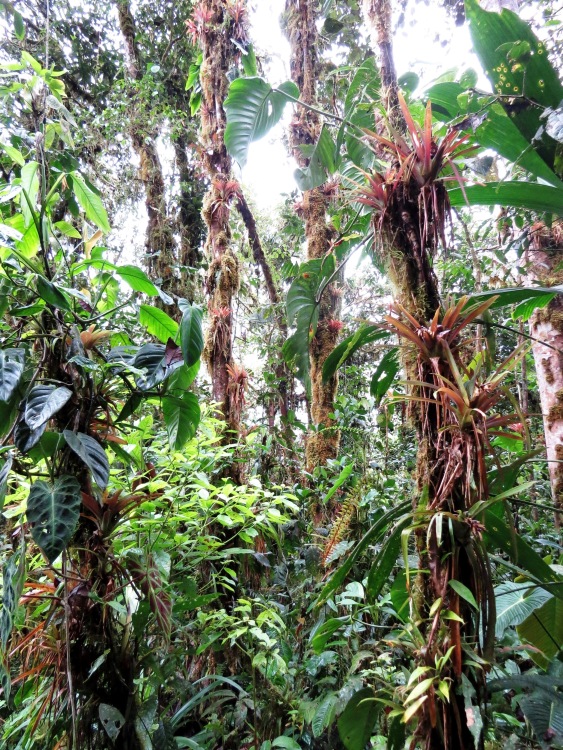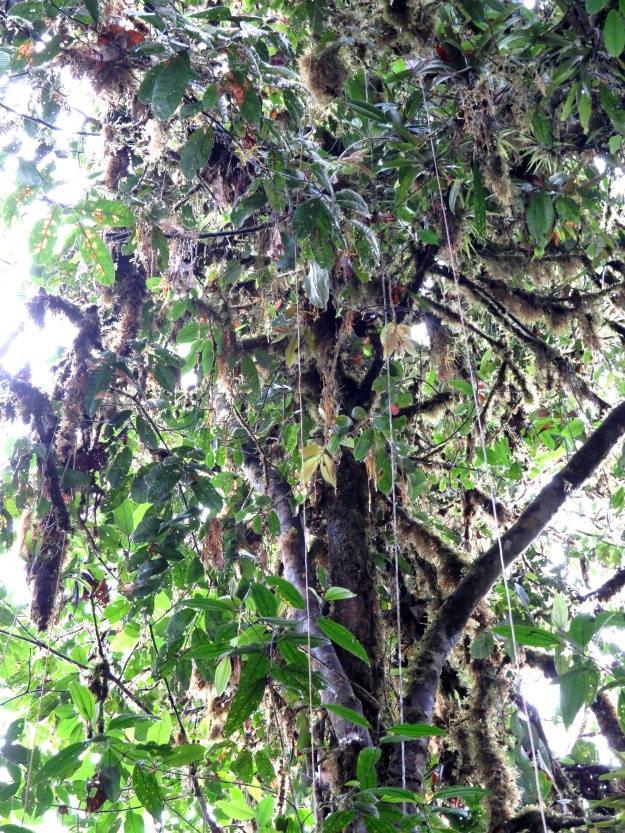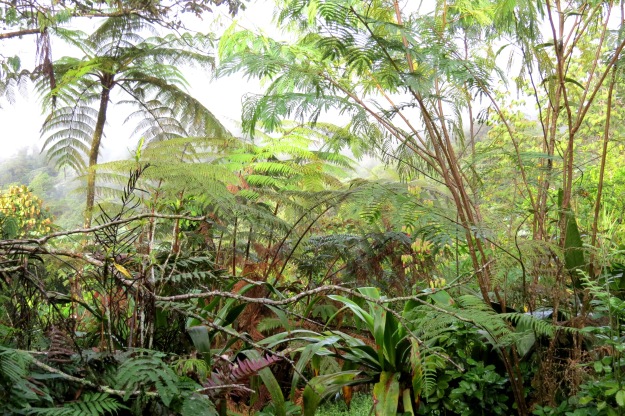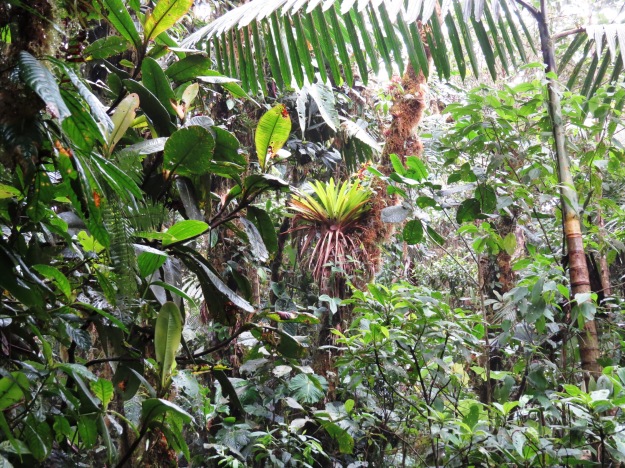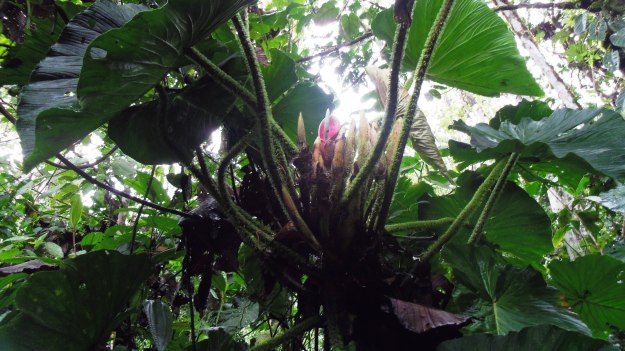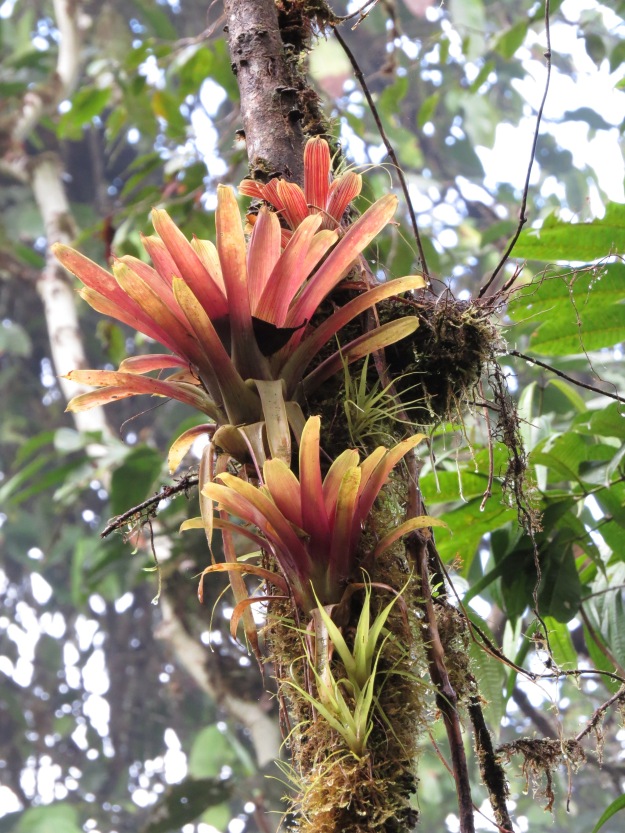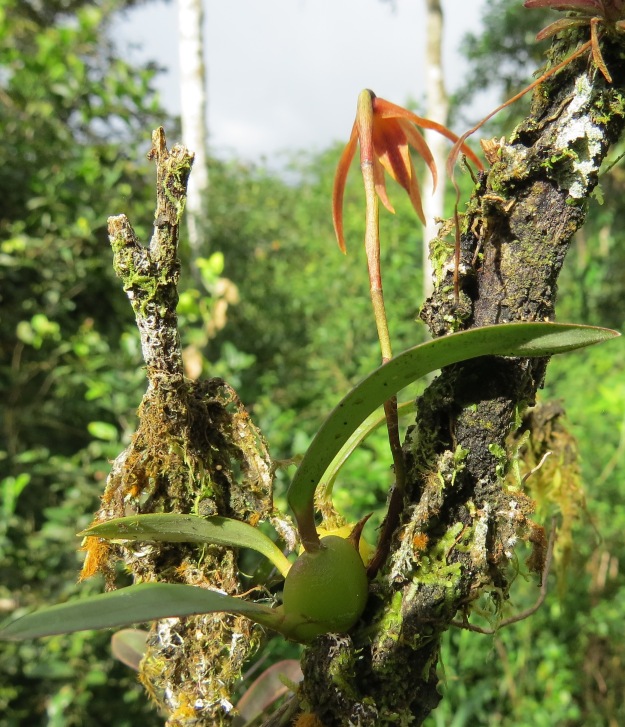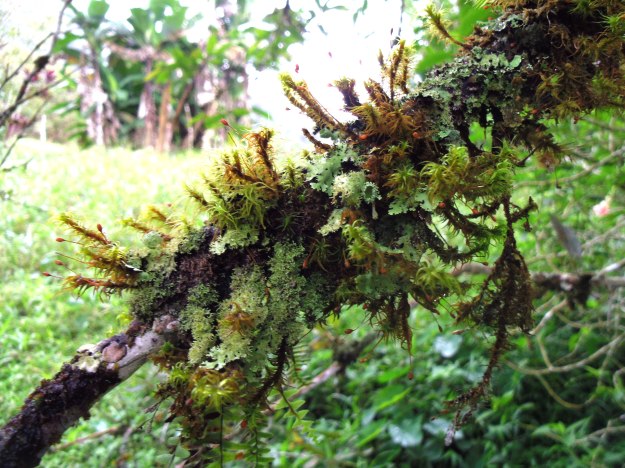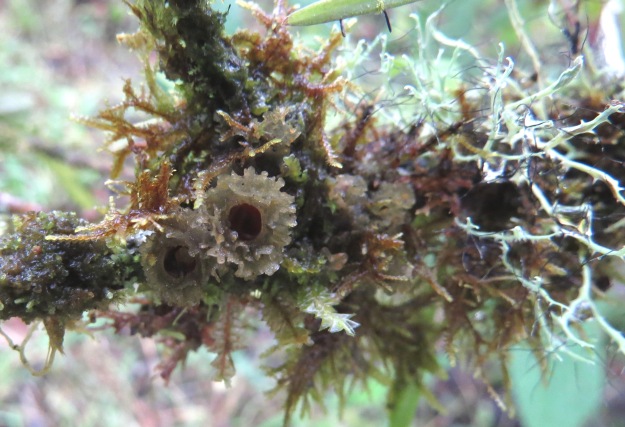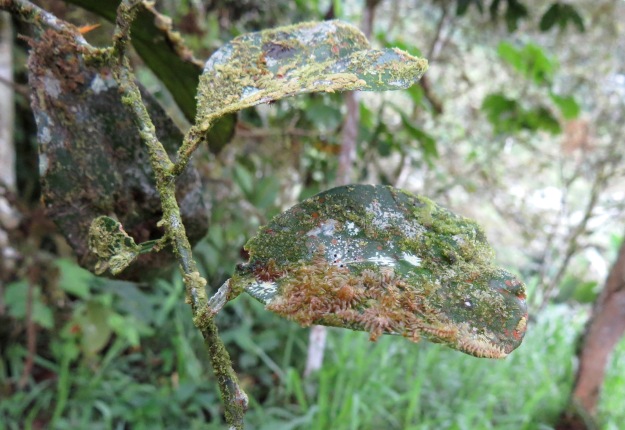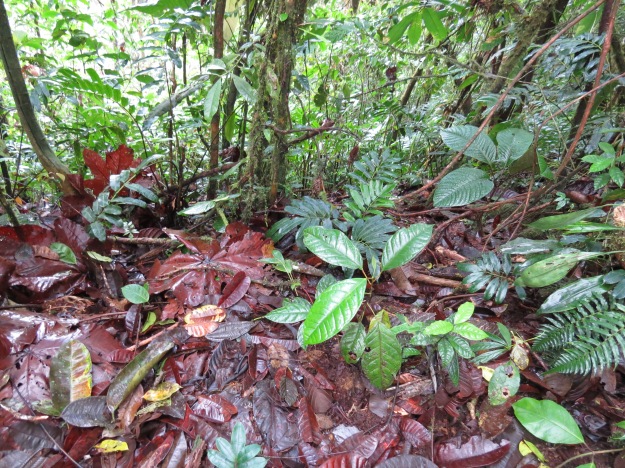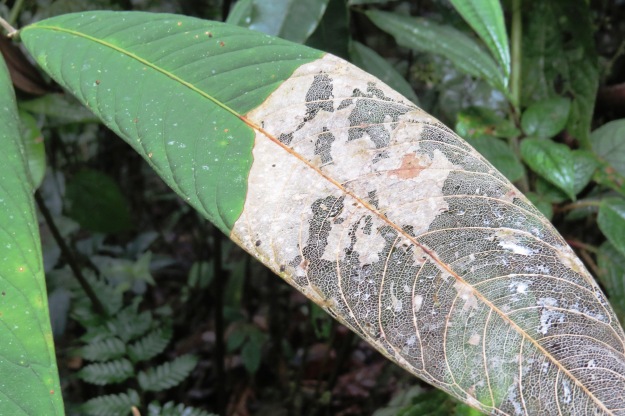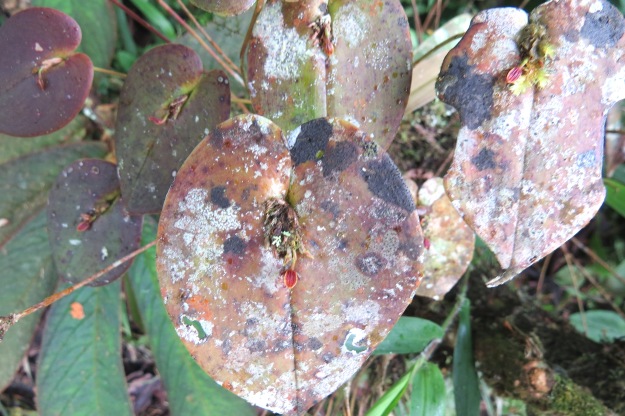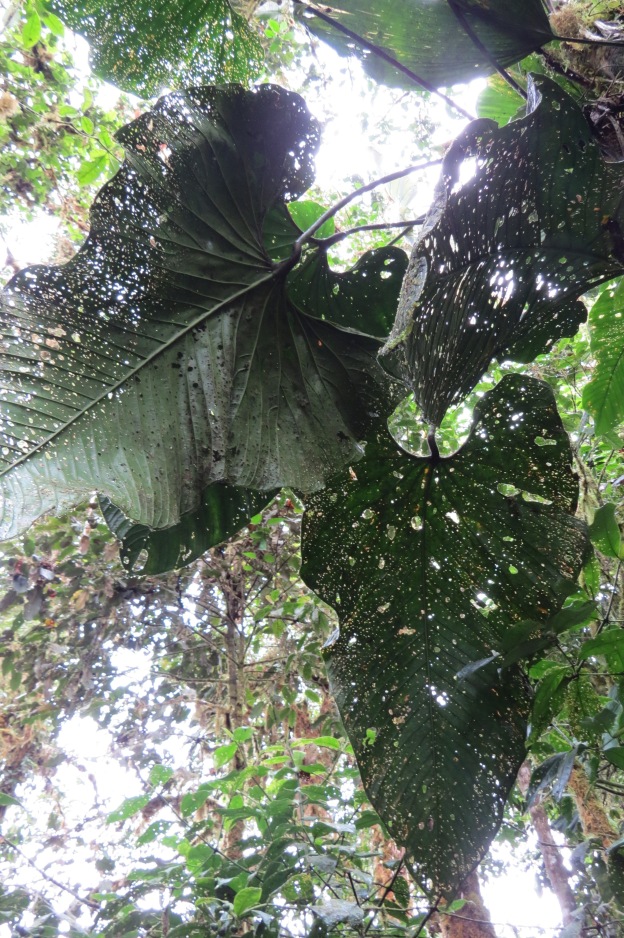
Bryophytes used to be a general term for mosses, liverworts and hornworts, and these three were grouped together into a single division due to their similarity. It is now known that they are not closely related and they have been split into three separate divisions.
-
Bryophyta Division – mosses
-
Anthocerophyta Division – hornworts
-
Marchantiophyta Division – liverworts
Although the term bryophyte is still used to mean plants in all three divisions, including Bryophyta, I think that is confusing, so instead I will use “BAMs” (Bryophyta, Anthocerophyta and Marchantiophyta) to refer to the three divisions, and the plants within them.
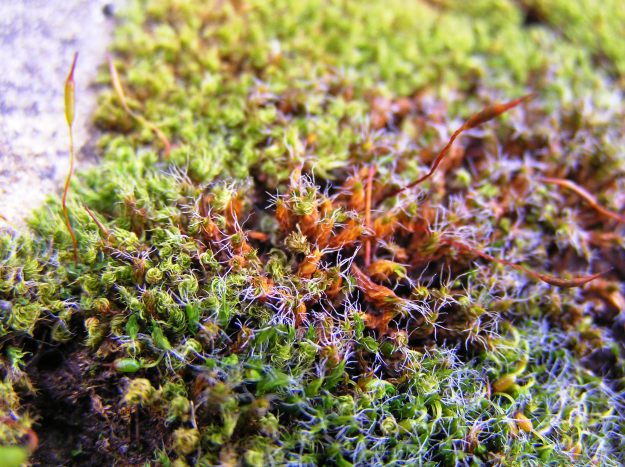
Moss
Introduction
BAMs (Bryophyta, Anthocerophyta and Marchantiophyta) were some of the earliest plants to evolve, as a result they are primitive when compared to later, vascular plants. Their leaves, stems, and the rhizoids they have in the place of roots, are all simpler and less effective. BAMs are non-vascular, although they do have a simple, conducting system for transporting water and nutrients, it does not contain the xylem and phloem vessels found in vascular plants and is not nearly so efficient. As a result, BAMs do not grow large, because they cannot transport water a long distance, and are limited to damp shady areas, because in the sun they dry out. They reproduce by spores, rather than seeds and their reproductive cycle involves two distinct, external stages, (essentially two different plants) which does not happen in plants with seeds.
 Mosses can be divided into two different groups:
Mosses can be divided into two different groups:
- Acrocarp – upright
- Pleurocarp – creeping
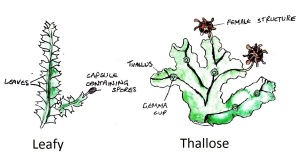
Leafy and Thallose
And Liverworts:
- Thallose – larger rubbery leaves and flower-like capsules containing spores (sporophytes). Thallose means the tissue is undifferentiated.
- Leafy – smaller leaves arranged along a short stem, small globe capsules. Most liverworts are leafy.
The Hornwort Division is much smaller and does not split readily into types.
Note: Plants in the Ceratophyllum genus are also referred to as hornworts, these are very different plants and they are aquatic and flowering.

Moss with Sporophytes (capsules and seta)
What makes BAMs different from other plants?

Click for close up
Roots and rhizoids: BAMs do not have roots, they have rhizoids, these are also found on horsetails and ferns (Pteridophyta), club mosses and quillworts (Lycopodiophyta). Some fungi and algae also have rhizoids. Rhizoids are similar to roots, in that they transport water and nutrients, and anchor the plant to the soil or substrate, but are much simpler in form, often only one cell thick.

Click for close up
Simple and Complex Leaves: Leaves on BAMs are single celled, apart from the midrib. They contain chloroplasts for photosynthesis, but otherwise the cells are not specialised as they are in other plants.
Reproduction
To explain how sexual reproduction is different in BAMs, it’s necessary to first explain sexual reproduction as it is in all organisms.

Diploid and Haploid Cells
There are two types of cell:
- Diploid cell (2n) – a cell with two sets of DNA, most cells in an organism are diploid.
- Haploid Cell (n) – cell with one set of DNA, cells are only haploid when an organism is reproducing or preparing to reproduce.
And two types of cell division:
- Mitosis – a cell replicates its DNA and splits in two so that each new cell has the same amount of DNA as the original. This type of cell division is used when an organism grows. Can occur in both haploid and diploid cells.
- Meiosis – the DNA does not replicate and when the cell splits in two each new cell has half the DNA of the original. This type of cell division is used only for sexual reproduction. Occurs only in diploid cells and results only in haploid cells.*

Diagram Showing Mitosis

Diagram Showing Meiosis
Example: Daisy
Inside the flower of a daisy, some cells are dividing by meiosis in order to create haploid cells, called the male gamete. These haploid cells form pollen (each pollen grain contains one gamete) which are picked up by bees and deposited onto another daisy flower that will contain the female gamete. The two haploid gamete cells fuse to form a single diploid cell (one strand of DNA from each gamete), called the zygote. The zygote grows by mitosis in the flower until it forms a slightly larger and more complex embryo daisy. This embryo is contained within a seed which falls (or is blown) away from the mother plant to land and grow, by mitosis, into a new daisy, similar but not identical to the two parents.
This process is fairly similar in animals with the same use of meiosis and haploid cells to reproduce, the main difference is in how the male gamete finds the female gamete (eg by mating) and instead of falling as a seed the embryo is released as an egg, a pupa or forms inside the adult.

Diagram of Moss
BAMs do not reproduce in quite the same way. Although they too create haploid cells by meiosis (called spores), these haploid cells form a plant called a gametophyte. The gametophyte is made of haploid cells and creates more haploid cells, the gametes, by mitosis. Some gametes are male, some female (although some species produce only male or female gametes and these gametes will need to find a gamete of the opposite gender to fuse with). A female gamete fuses with a male gamete to create a new diploid plant, called a sporophyte. Often the sporophyte grows out of the gametophyte (seen right). The sporophyte produces spores, these are haploid and each will potentially grow into a new gametophyte and so the cycle starts again.
This alternation of diploid and haploid plants, sporophyte and gametophyte, is called Alternation of Generations. It is often described as happening in all plants, but only plants, never animals (although it can also be said to happen in fungi). However, animals do have a diploid and haploid phase, the only real difference is that plant gametes, such as pollen can divide, whereas haploid gamete cells in animals cannot. Otherwise the process is very similar: diploid cells divide by meiosis to become haploid gametes and two gametes of different genders fuse to become a diploid zygote which then divides by mitosis to get bigger and become a whole new organism. Thank you to Walter Hintz at this website for helping me understand this http://www.allexperts.com/user.cgi?m=4&expID=48818&catID=664
Here are my question and his answer.
http://en.allexperts.com/q/Biology-664/2013/3/alternating-generations.htm
What makes BAMs different from each other?
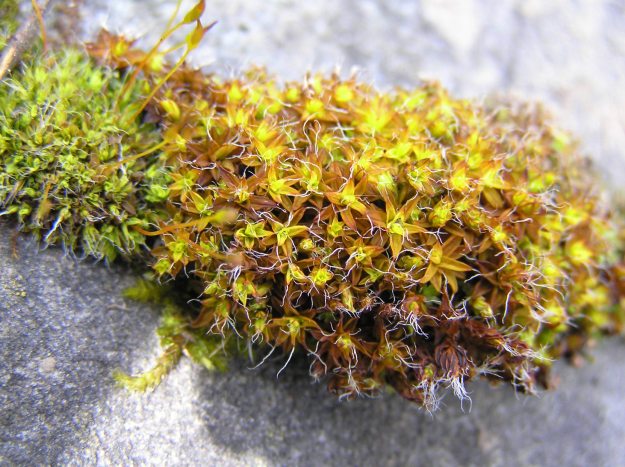
Yellow Moss
All BAMs like moist shady areas, but mosses are a little hardier than liverworts and cope better with dry weather.
There are 12,000 species of moss, 6,000-8,000 species of liverwort but only 100 species of hornwort. Mosses are abundant in England, liverworts are a little harder to find and hornworts are not common here, preferring tropical climates.

Liverwort and Pencil Tip
I took a recent trip to Highgate Cemetery to find mosses and liverworts. I found a few liverworts in the really boggy areas, growing on soil, although liverworts can grow on stone. I was surprised at how small the liverworts were and the photo above shows some with a pencil tip to show size. Moss covered everything, but at first it was difficult to see any more than one kind – partly because I wasn’t used to looking and partly because certain mosses are much more successful than others and tend to take over. In the end I did spot a few different kinds, the photos throughout this blog are ones I took on the trip, but here are some close up photos of the different types of moss I discovered.
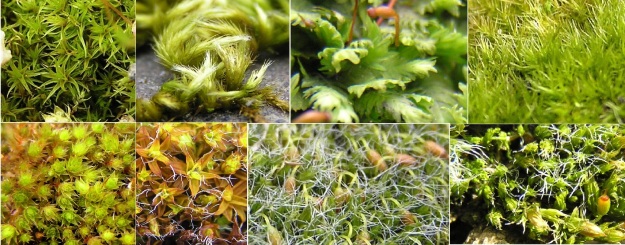
Mosses Found In Highgate Cemetery
Differences in Appearance

Liverwort
Mosses are soft and leafy, with many tiny leaves, and the sporophytes are small capsules on the end of long thin seta (seen in diagrams above). Liverworts have slightly larger, flat rubbery leaves usually growing much closer to the ground, their sporophytes are either like rubbery, green flowers (seen on the drawing at the top of this page) or globes on a stem (seen below). Some liverworts have round gemma cups (seen at the top of this photo) containing fragments of liverwort that can break away and form new gametophytes, this is a form of asexual reproduction. Gemmae can also be found in mosses. Hornworts look fairly similar to liverworts in the gametophyte stage, but the sporophyte is a distinctive long, thin, needle-like protuberance.

Liverwort with Sporophytes
Differences in Biology
The biological differences are a little detailed for the purposes of this blog, so I will only list a few briefly: Hornworts produce slime in between the cells. Most hornwort species have a single chloroplast in each cell, unlike liverworts, mosses and all other plants, only algae have this same feature. The rhizoids in mosses are multicellular, but unicellular in hornworts and liverworts. Mosses and hornworts have true stomata (breathing holes) on their sporophytes, but liverworts do not.
Bizarre bryophytes and not-bryophytes
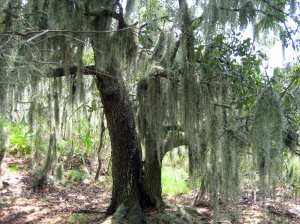
Spanish Moss
Spanish moss or beard lichen is often thought to be a parasitic, but it merely grows in abundance on trees. However, it is NOT actually a moss, or a lichen, but a flowering plant in the bromeliad family. Ball moss is similar, a flowering plant rather than a moss. Reindeer moss is also not a moss, but a lichen.
This picture was taken from the following website http://www.learnnc.org/lp/multimedia/6540
Mosses are not parasitic, but some liverworts are. Aneura mirabilis, Cryptothallus mirabilis and Cryptothallus hirsutus are all parasitic liverworts. They are pale because they have no chlorophyll and therefore cannot photosynthesize. Instead they gain their nutrients from fungi that are working symbiotically with a tree, ie the fungus and tree are aiding one another, the tree provides carbohydrate for the fungus, the fungus extracts nutrients from the soil for the tree and then the Aneura sneaks in and takes nutrients from the fungus without giving anything back.

Luminous Moss
Luminous moss (Schistostega pennata), also known as Elfin Gold, glows green in the dark. It can take light, no matter how faint, and reflect it, leading to the luminescence. For this reason it is able to grow in places too dark for other mosses. It is native to the Northern Hemisphere and is found growing in caves or between rocks. This picture is taken from http://www.botanic.jp/plants-ha/higoke.htm and there are other pictures of the moss on that site.
*Note to meiosis: Occasionally, or with some specific species, the process of meiosis and mitosis do not occur as described above, and instead a cell, a tissue, or an entire organism can end up having more than two sets of DNA. For example if a diploid cell does not split by meiosis as usual and then fuses with a haploid cell, the result is a cell with three sets of chromosomes. This state is called polyploidy, it can have a function, both biologically and commercially.

